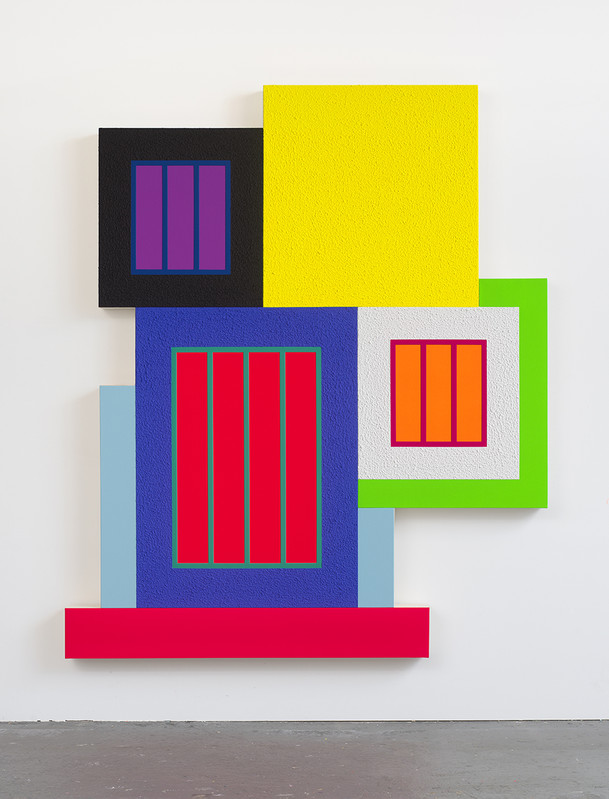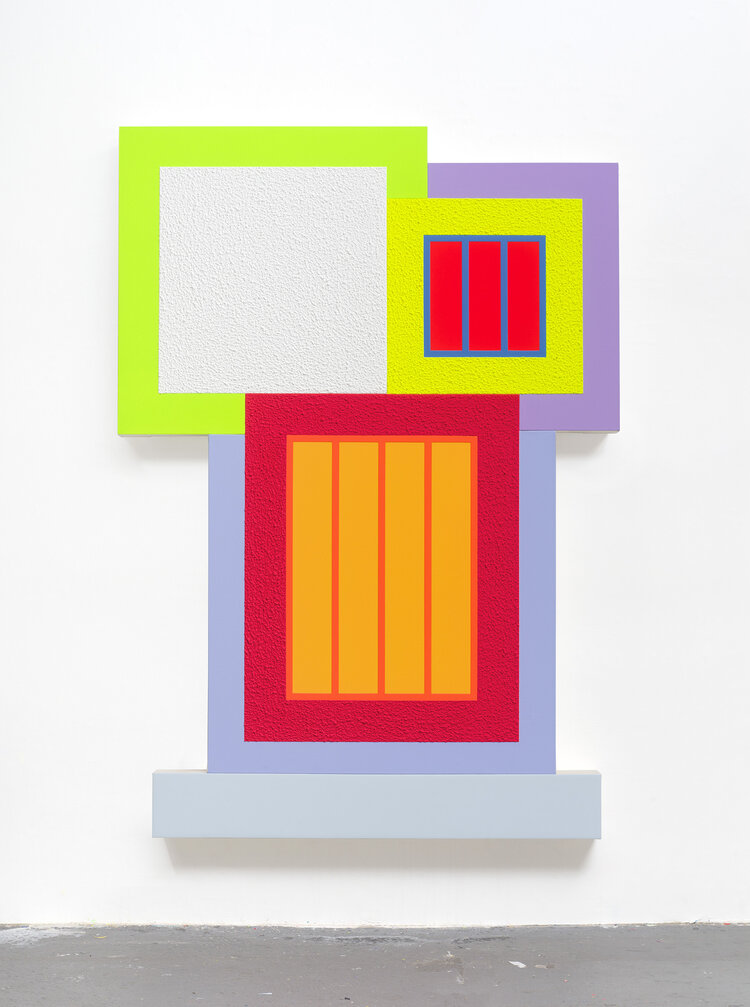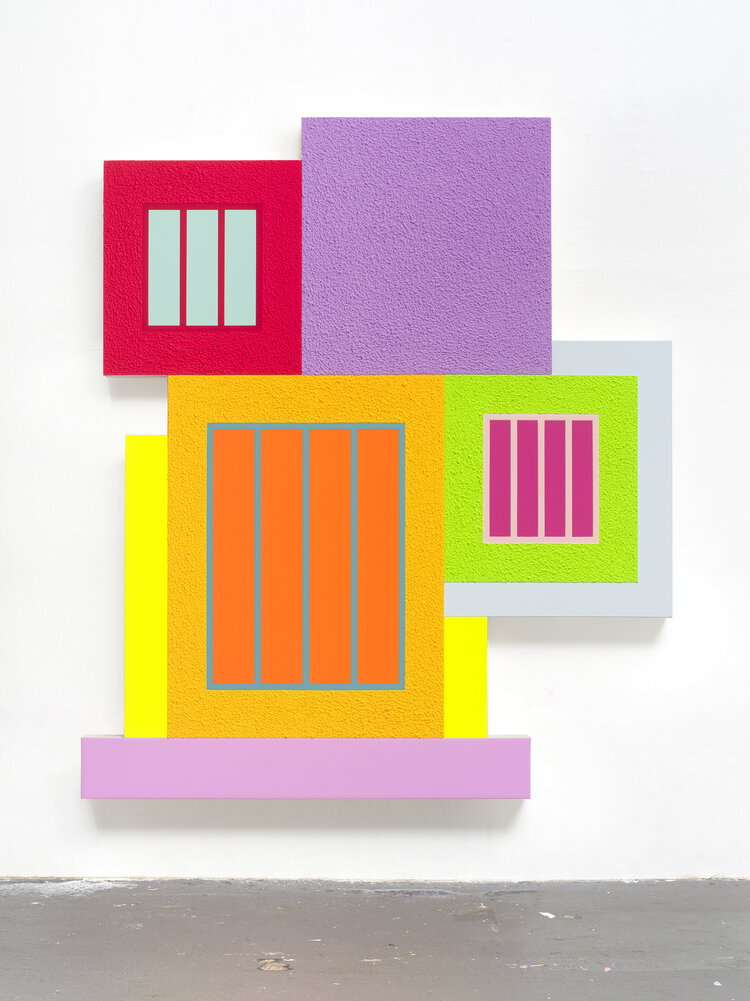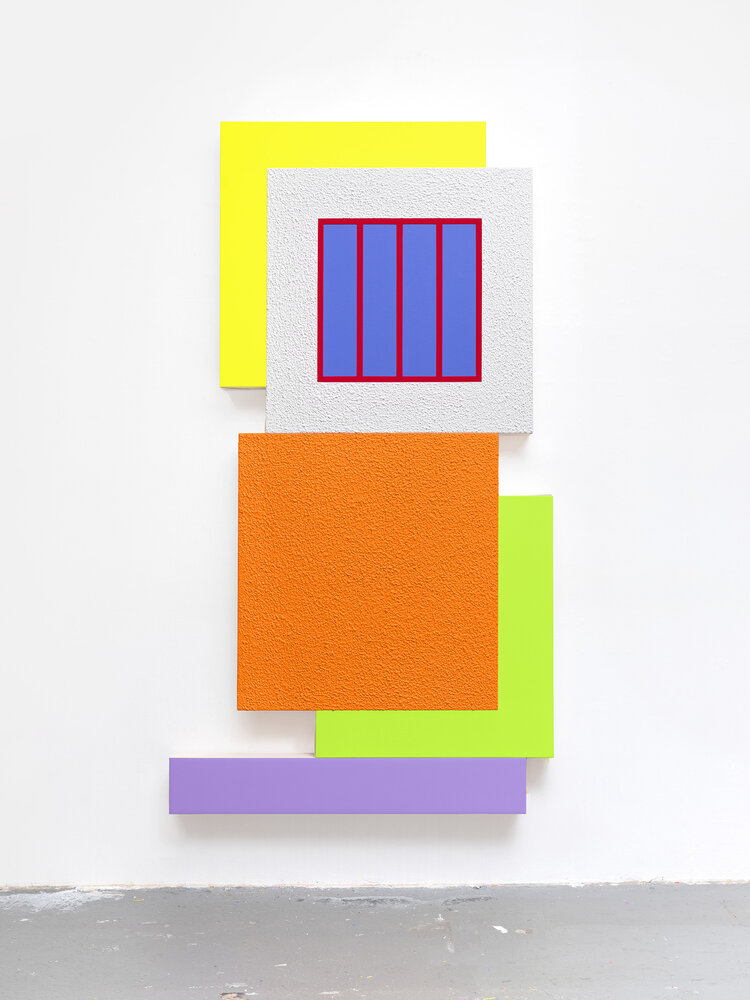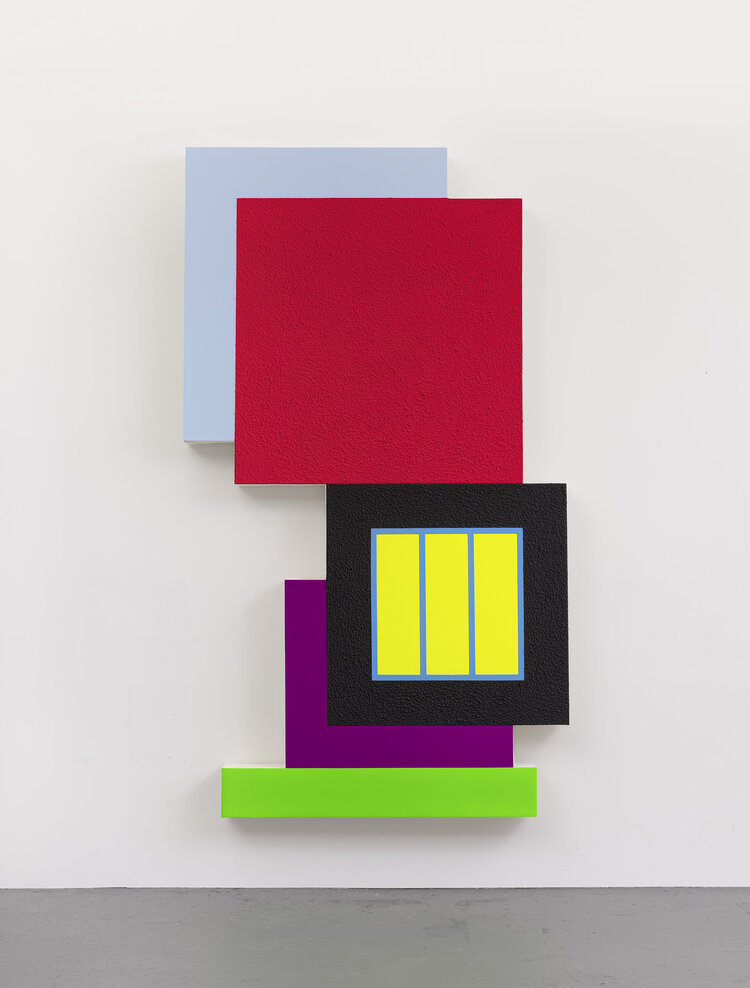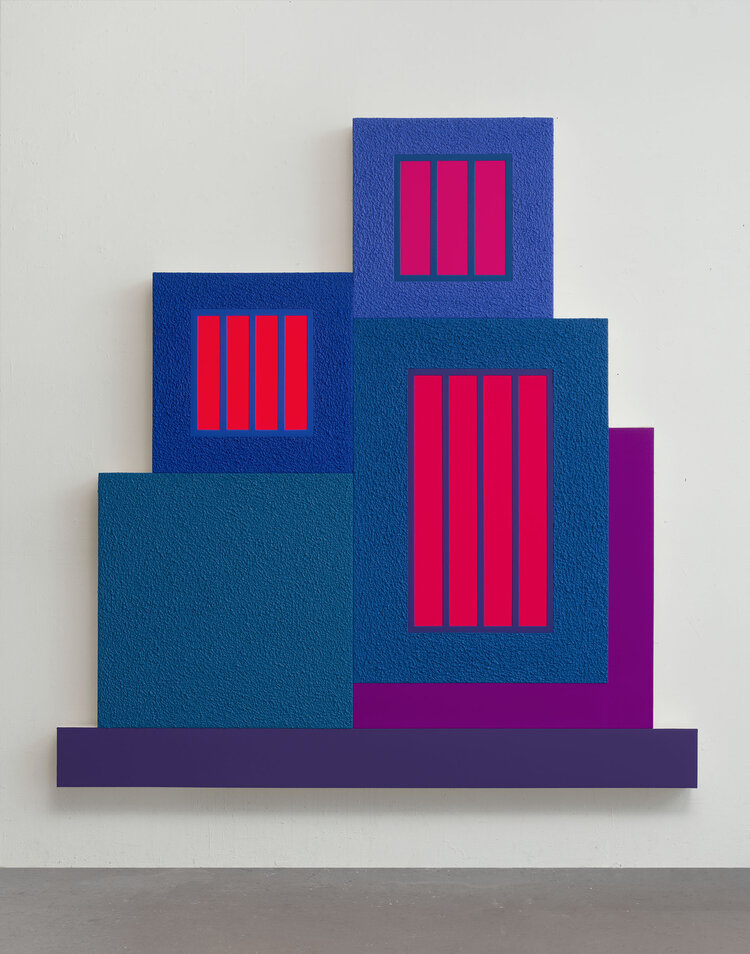ART CITIES:Paris-Peter Halley
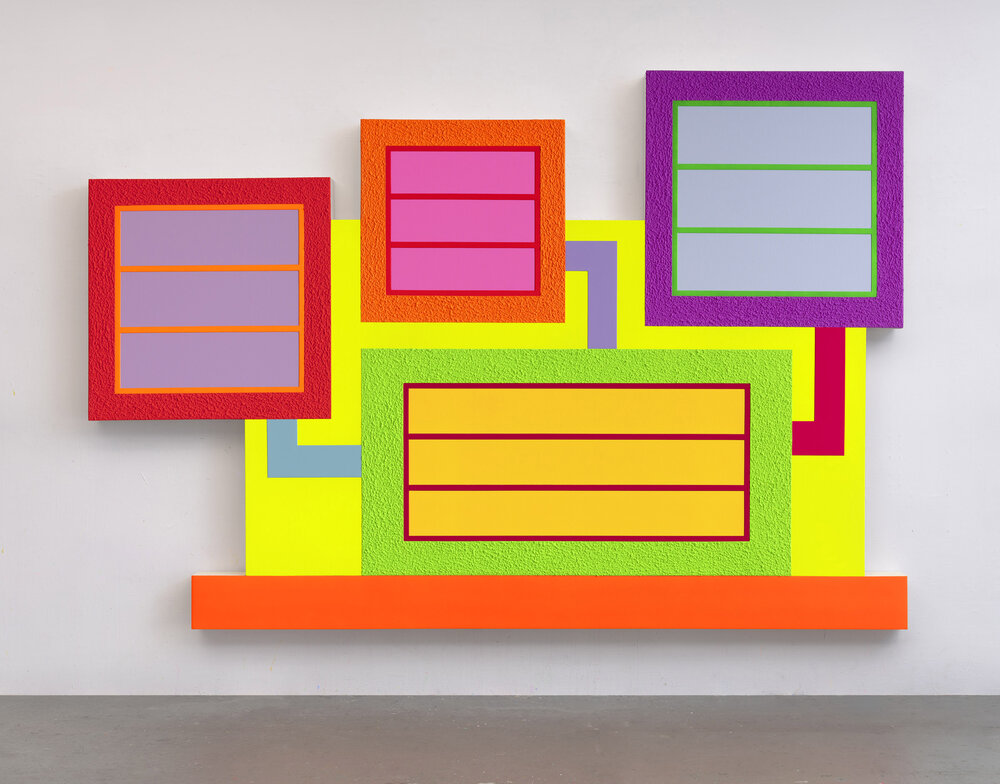 Having emerged in New York’s East Village Art scene in the early ‘80s, Peter Halley’s paintings are diagrams of the lived experience in a contemporary urban environment, in which social space is ever more divided and geometrised but individuals remain connected via ‘conduits’ of information flows, roadways and electrical grids. As an essayist, Halley has also written about the prison cell as a metaphor for modern isolation. But his originality also lies in his use of color and texture.
Having emerged in New York’s East Village Art scene in the early ‘80s, Peter Halley’s paintings are diagrams of the lived experience in a contemporary urban environment, in which social space is ever more divided and geometrised but individuals remain connected via ‘conduits’ of information flows, roadways and electrical grids. As an essayist, Halley has also written about the prison cell as a metaphor for modern isolation. But his originality also lies in his use of color and texture.
By Dimitris Lempesis
Photo: Xippas Gallery Archive
Embedded in social, philosophical, conceptual context, Peter Halley’s geometric abstractions operate in the language of codes and tell stories about both the past and the future. Ideographic, the artworks refer to multiple realities at once, from architecture to art history to societal and digital organizations, and create wonderful alchemical riddles – for the viewer to solve. Peter Halley’s solo exhibition “Recent Paintings” presents his most recent “constructor” paintings for the first time in France. This new body of work transcends the conventionality of a square or a rectangular shape and reorganizes the real each time in a different puzzle. Openly multipart, Peter Halley’s new paintings revolt against flatness. They create an illusion of volume, if not a forced perspective, and emphasize even more their architectural character. Color blocks juxtapose like façades in a street-view of a modernist city. Towers rise up, scratching the sky, and seem to detach themselves from the ground (– or maybe it’s their foundation that gets shaky, like it’s usually the case when one deals with ivory towers). Gridded windows mysteriously glow and create a half-physical half-digital landscape, which could as well be a desktop, with multiple applications open at once. Out of nowhere, a Sci-Fi city appears. A city, inhabited by fluorescent lights and simulacra…
Born in 1953 in New York City, Halley completed his BA in art history at Yale University, New Haven, and, later, completed his MFA at Phillips Academy in Andover, Massachusetts, from which he graduated in 1971. During that time, Halley read Josef Albers’s “Interaction of Color” (1963), which would influence him throughout his career. Following his graduate studies, he moved back to New York in the early 1980s, and was soon given his first solo exhibition at PS122 Gallery. His early works included references to pop culture as well as broader social issues, but as his practice developed he began incorporating higher degrees of geometric abstraction as well as his signature use of Day-Glo paint. Developing his own visual lexicon, Halley engages in a play of relationships between what he calls “prisons” and “cells”(composed of rectangular shapes and vertical bars) evocative of geometric networks from the urban grid to high-rise apartment buildings to electromagnetic conduits. While his rigid planes of color, unitary shapes, and non-hierarchical compositions nod toward Minimalism, by transforming the Minimalist square into a prison cell, Halley’s works call the supposed neutrality of such art into question. Halley, along with other contemporaneous artists working within the scope of neo-conceptualism such as Sarah Charlesworth, Annette Lemieux and Jeff Koons, sought to simultaneously highlight and critique the roles that physical and technological powers play in an increasingly commodity-driven society. Ultimately, his oeuvre on a whole, including his paintings, sculptures and writings, profoundly impacted the development of American post-modern intellectualism. Along with Bob Nickas, Halley co-founded “Index” magazine in 1996, which featured interviews with figures in the artistic fields, similar to Andy Warhol’s “Interview” magazine; the magazine was considered an important art publication throughout its run until its final issue in 2005. As both author and artist, Halley has drawn upon the writings of the French theoreticians Michel Foucault and Jean Baudrillard to articulate and substantiate his dual critique of culture and art. Foucault’s analysis of the geometric organization of industrial society, particularly institutional modes of confinement, inspired Halley to transform a Minimalist square into a prison cell by adding three vertical bars to the form. In response to Baudrillard’s exploration of postindustrial culture: its reliance on information systems, media representation, and an economy that privileges image over product, Halley shifted to schematized depictions of enclosed spaces, linked to the world through a network of electronic, telephonic, and fiber-optic conduits. In addition to his painting and writing, Halley has had a significant teaching career at Columbia University, New York, the University of California, Los Angeles, and Yale University.
Photo: Peter Halley, A Perfect Plan, 2020, Acrylic, fluorescent acrylic and Roll-a-Tex on canvas,74 x 108.5 inches, © Peter Halley, Courtesy the artist and Xippas Gallery
Info: Xippas Gallery, 108 Rue Vieille du Temple, Paris, France, Duration: 16/10/2021-15/1/2022, Days & Hours: Tue-Fri 10:00-13:00 & 14:00-19:00, Sat 10:00-19:00, www.xippas.com
